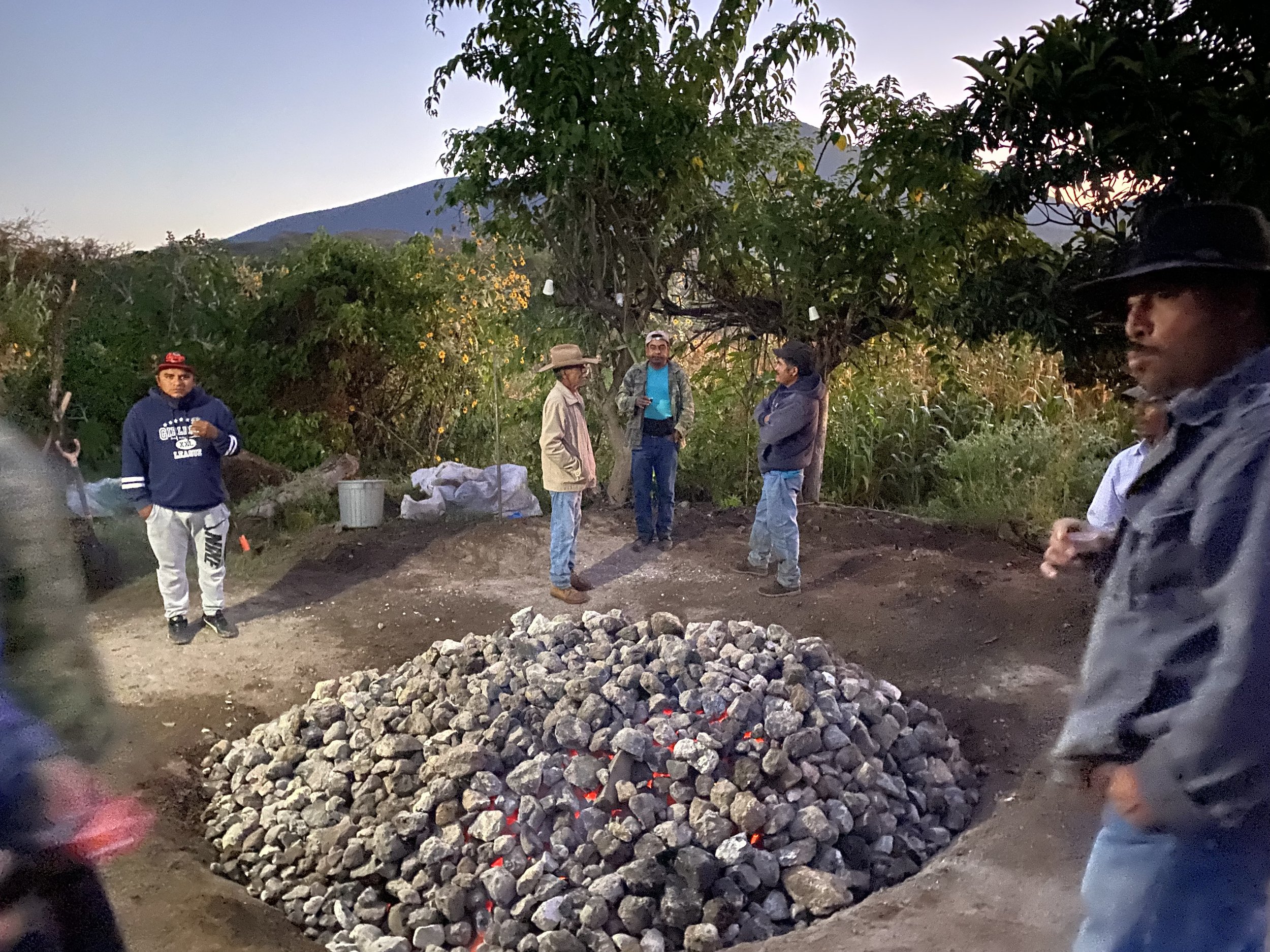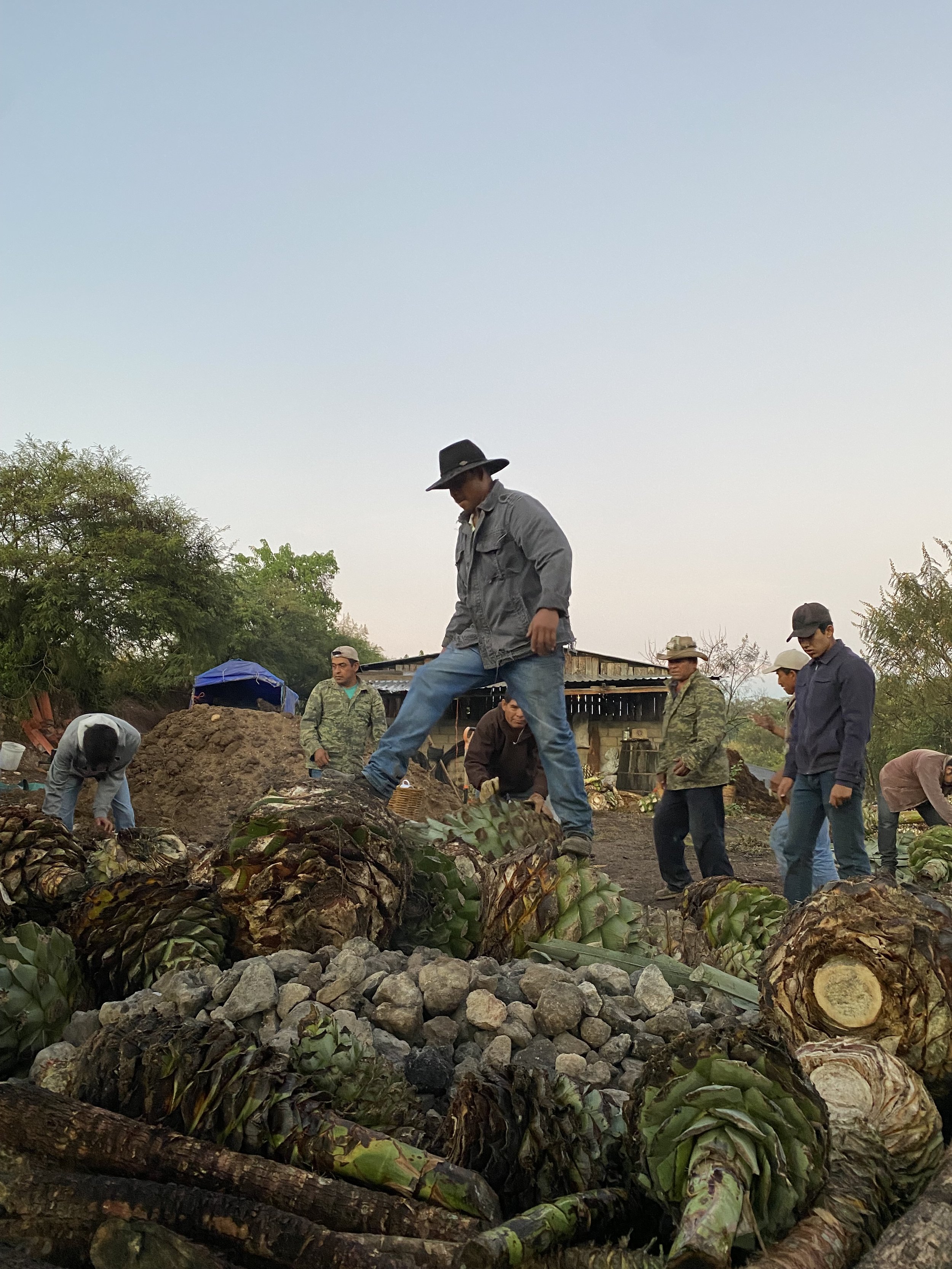cucharillo con espadín - amatlán
Batch: CGG-05
Release date: Oct 2023
In the community of San Luis Amatlán, in the Miahuatán district of southern Oaxaca, Camilo shares a palenque with his brother-in-law, Nicolas, and makes spirits in the style of the region.
While Miahuatlán has a long history of working with a wide variety of agave species that all thrive in its unique tierra blanca (white earth), producers are only recently experimenting with Cucharillo (Dasylirion sp).
Cucharillo is not actually an agave, rather it’s a species of dasylirion. This type of plant has a much longer history of being distilled in the north of Mexico, where it’s known as Sotol.
As opposed to agaves, which flower just once before dying, dasylirion plants flower once every few years, after which the plant can continue to grow. This is quite exciting from a sustainability perspective, as it means seeds can be collected from a plant before it dies. Whereas an agave must be harvested before going to seed to be good for mezcal.
Wild Cucharillo in Amatlán
Partly harvested
Each time the plant flowers, the piña will continue to grow at a slightly different angle. You can see this in the pictures above and below. With the gap between flowerings said to be around 6-7 years, the long piña Nicolas is looking at could easily be a 100 year old plant.
Checking out the harvested Cucharillo with Nicolas & Camilo
Camilo harvesting dasylirion
For this batch, from 20 day roast of mixed agaves, Camilo selected 25 piñas of wild cucharillo and 3 piñas of cultivated espadín (A.Angustifolia), making the balance about 70% Cucharillo to 30% Espadín.
Waiting at sunrise for the coals to be ready to load the agave
Using bagazo, the mezcal bi-product, as sealant for the oven.
Those plants filed just a single fermentation tina, where they were left to interact with the natural airborne yeasts for 6 days before being double distilled in a copper alembic.
The alembic’s at this palenque are fitted with refrescaderas (water baths around the cooling dome) so they can choose whether to use this technique or not batch-by-batch, dependent on agave mix and climatic conditions. Camilo did not employ the refrescador for this batch.
This winter batch was distilled in December 2021. After proofing with heads and tails (puntas y colas) the final yield of the batch was 60 litres. We’ve had it resting since, and now here it is!
Gracias Camilo
Tasting notes: Light citrus peel on the nose, with a fresh salinity that can be expected from Amatlán. Grassy dry straw on first sip, reminiscent of sotol from the north. Highly mineral in the mid-palate. Go back in for another nose and it’s turned into fresh masa before being pressed into tortillas and tejate. Opens into peaches and cream with time in the glass.
Grab a bottle for your collection while stocks last:
Continue your agave spirits journey via the Mezcal Appreciation Society:













